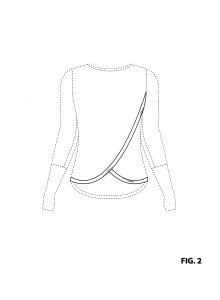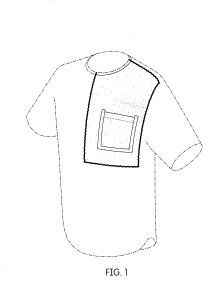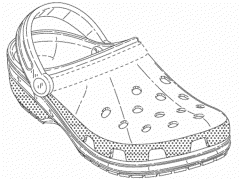Google vs. Equustek Saga: The Final Countdown
By Richard Stobbe
Last month we asked: The Google vs. Equustek Decision: What comes next?
Part of the answer was handed down recently by a B.C. court in Equustek Solutions Inc. v Jack, 2018 BCSC 329 (CanLII), after Google applied to vacate or vary the original order of Madam Justice Fenlon, which was granted way back in 2014. That was the order that set off a furious international debate about the reach of Canadian courts, since it required Google to de-index certain sites from Google’s worldwide search results, based on an underlying lawsuit that the plaintiff Equustek brought against the defendants (which is finally set for trial in April, 2018).
Google of course was always invited to seek a variation of that original court order. As noted by the latest judgment, that right to apply to vary has been recognized by the B.C. Court of Appeal and the Supreme Court of Canada. After Google received a favourable decision last year from a US court, the way was paved to vary the original order that has caused Google so much heartburn. The next step is that Google will seek a cancellation or limitation of the scope of that original order, so that the order applies only to search results in Canada through google.ca.
The last step, with luck, will be a hearing of the merits of the underlying IP claims; some commentators have questioned why Google was used to obtain a practical worldwide remedy when the IP rights asserted by Equustek do not appear to be global in scope. As I mentioned in my earlier article, there has been very little analysis of Equustek’s IP rights by any of the different levels of court. Since this entire case involved pre-trial remedies, the merits of the underlying allegations and the strength of Equustek’s IP rights have never been tested at trial. In order for the injunction to make sense, one must assume that the IP rights were valid. Even if they are valid, Equustek’s rights couldn’t possibly be worldwide in nature. There was no evidence of any worldwide patent rights or international trademark portfolio. So, the court somehow skipped from “the internet is borderless†to “the infringed rights are borderless†and are deserving of a worldwide remedy.
To be continued…
Calgary – 07:00 MST
No comments
Uber vs. Drivers: Canadian Court Upholds App Terms
.
By Richard Stobbe
One of Uber’s drivers, an Ontario resident named David Heller, sued Uber under a class action claim seeking $400 million in damages. What did poor Uber do to deserve this? According to the claim, drivers should be considered employees of Uber and entitled to the benefits of Ontario’s Employment Standards Act (See: Heller v. Uber Technologies Inc., 2018 ONSC 718 (CanLII)).
As the court phrased it, while “millions of businesses and persons use Uber’s software Apps, there is a fierce debate about whether the users are customers, independent contractors, or employees.” If all of the drivers are to be treated as employees, the costs to Uber would skyrocket. Uber, of course, resisted this lawsuit, arguing that according to the app terms of service, the drivers actually enter into an agreement with Uber B.V., an entity incorporated under the laws of the Netherlands. By clicking or tapping “I agree” in the app terms of service, the drivers also accept a certain dispute resolution clause: by contract, the parties pick arbitration in Amsterdam to resolve any disputes.
Really, at this stage Uber’s defence was not to say “this claim should not proceed because all of the drivers are independent contractors, not employees”. Rather, Uber argued that “this claim should not proceed because all of the drivers agreed to settle disputes with us by arbitration in the Netherlands.”
So the court had to wrestle with this question:  Should the dispute resolution clause in the click-through terms be upheld? Or should the drivers be entitled to have their day in court in Canada?Â
The law in this area is very interesting and frankly, a bit muddled. This is because there are two distinct issues in this legal thicket: a forum-selection clause (the laws of the Netherlands govern any interpretation of the agreement), and a dispute resolution clause (here, arbitration is the parties’ chosen method to resolve any disputes under the agreement). For these two different issues, Canadian courts have applied different tests to determine whether such clauses should be upheld:
- In the case of forum selection clause, the Supreme Court of Canada (SCC) tells us that the rule from Z.I. Pompey Industries is that a forum selection clause should be enforced unless there is “strong cause†not to enforce it.  In the context of a consumer contract (as opposed to a “commercial agreement”), the SCC says there may be strong reasons to refrain from enforcing a forum selection clause (such as unequal bargaining power between the parties, the convenience and expense of litigation in another jurisdiction, public policy reasons, and the interests of justice). In the commercial context (as opposed to a consumer agreement), forum selection clauses are generally upheld.
- In the case of upholding arbitration clauses, the courts have applied a different analysis: arbitration is generally favoured as a means to settle disputes, using the “competence-competence principle”. Again, it’s an SCC decision that gives us guidance on this: unless there is clear legislative language to the contrary, or the dispute falls outside the scope of the arbitration agreement, courts must enforce arbitration agreements.
The court said this case “is not about a discretionary court jurisdiction where there is a forum selection clause to refuse to stay proceedings where a strong cause might justify refusing a stay; rather, it is about a very strong legislative direction under the Arbitration Act, 1991 or the International Commercial Arbitration Act, 2017 and numerous cases that hold that courts should only refuse a reference to arbitration if it is clear that the dispute falls outside the arbitration agreement.”
Applying the competence-competence analysis, the court (in my view) properly ruled in favour of Uber, upheld the app terms of service, and deferred this dispute to the arbitrator in the Netherlands. This class action, as a result, must hit the brakes.
The decision is reportedly under appeal.
Calgary – 07:00 MST
1 commentCopyright in Architectural Works: an update
By Richard Stobbe
Who owns the copyright in a building?  A few years ago, we looked at the issue of Copyright in House Plans, but let’s look at something bigger. Much bigger.
In Lainco inc. c. Commission scolaire des Bois-Francs, 2017 CF 825, the federal court reviewed a claim by an architectural engineering firm over infringement of copyright in the design for an indoor soccer stadium.
Lainco, the original engineers, sued a school board, an engineering firm, a general contractor and an architect, claiming that this group copied the unique design of Lainco’s indoor soccer complex. The nearly identical copycat structure built in neighbouring Victoriaville was considered by the court to be an infringement of the original Lainco design even though the copying covered functional elements of the structure. The court decided that such functional structures can be protected as “architectural works†under the Copyright Act, provided they comprise original expression, based on the talent and judgment of the author, and incorporate an architectural or aesthetic element.
The group of defendants were jointly and severally liable for the infringement damage award, which was assessed at over $700,000.
Make sure you clarify ownership of copyright in architectural designs with counsel to avoid these pitfalls.
Calgary – 07:00
No comments
IP Protection in the Fashion and Apparel Industry (Part 2)
.
By Richard Stobbe
As noted in Part 1, IP rights in the fashion and apparel industry are fiercely contested. Fashion products can be protected in Canada using a number of different IP tools, including:
- confidential information
- patents
- industrial design or “design patentâ€
- trademarks
- trade dress
- copyright
- personality rights.
For many products, there will be an overlap in protection, and we’ll discuss some examples. In Part 2, let’s review the next couple of areas:
- Industrial Design or “Design Patentâ€:
I always tell my clients not to underestimate this lesser-known area of IP protection. It can be a very powerful tool in the IP toolbox. In both Canada (which uses the term industrial design) and the US (which refers to a design patent), this category of intellectual property only provides protection for ornamental aspects of the design of a product as long as they are not purely functional . To put this another way, features that are dictated solely by a utilitarian function of the article are ineligible for protection.
Registration is required and protection expires after 10 years. A registrable industrial design has to meet certain criteria: (i) it must differ substantially from the prior art (in other words it must be “originalâ€); (ii) it cannot closely resemble any other registered industrial designs; and (iii) it cannot have been published more than a year before application for registration. Some examples:  This depicts a recent registration by Lululemon. The design comprises the pattern feature of a shirt as depicted in solid lines in the drawings. (The portions shown in stippled lines do not form part of the design.)
This depicts a recent registration by Lululemon. The design comprises the pattern feature of a shirt as depicted in solid lines in the drawings. (The portions shown in stippled lines do not form part of the design.)

The solid lines on the image above represents a protected design registration filed by Nike.
TIP: Placement of a pocket on a t-shirt may not be considered innovative, but even minor differentiators can help distinguish a product in a crowded field. A design registration can support a blended strategy which also deploys other IP protection, such as trademark rights.
- Trademarks:
Every consumer will be intuitively familiar with the power of a brand name such as LULULEMON or NIKE, or the well-known Nike Swoosh Design. That topic is well-covered elsewhere. However, some brands take advantage of a lesser-known area of trademark rights: distinguishing guise protects the shape of the product or its packaging. It differs from industrial design, and one way to consider the distinction is that an industrial design protects new ornamental features of a product from when it is first used, whereas a distinguishing guise can be registered once it has been used in Canada so long that becomes a brand, distinctive of a manufacturer due to extensive use of the mark in the marketplace. It’s worth noting that the in-coming amendments to the Trademarks Act will do away with distinguishing guises.
One good example is the well-known shape of CROCS-brand sandals. The shape and appearance of the footwear itself has been used so long that it now functions as a brand to distinguish CROCS from other sandals. Just as with industrial design, the protected features cannot be dictated primarily by a utilitarian function.

Others have filed distinguishing guise registrations in Canada, including Canada Goose Inc. for coats and Hermès International for handbags.
TIP: For a distinguishing guise application, each applicant will have to file evidence to show that the mark is distinctive in the marketplace in Canada. That is not the case with a regular trademark, such a word mark or regular logo design.
We review the final areas of IP protection in Part 3.
Calgary – 7:00 MST
No comments